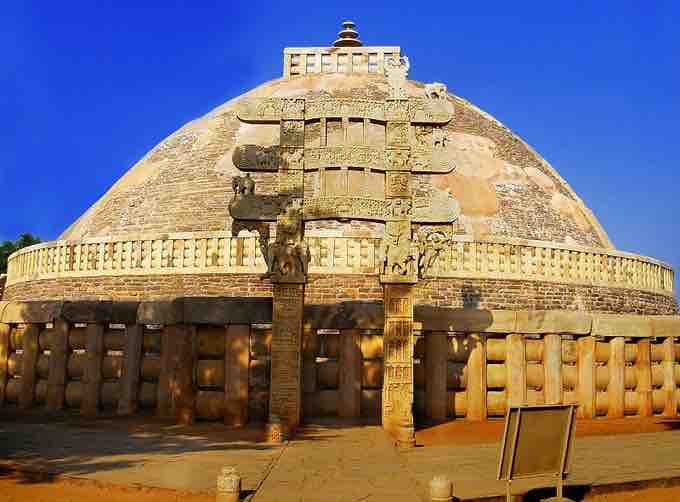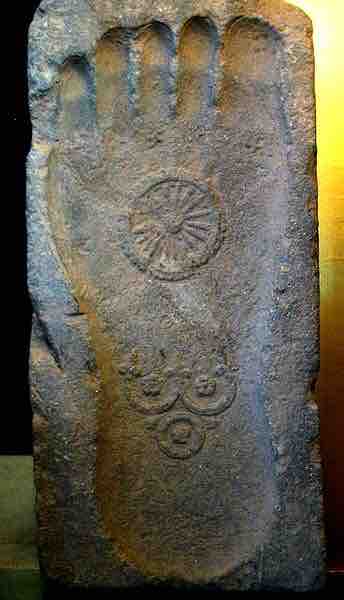Introduction: Buddhism and Buddhist Art
Buddhism is a religion indigenous to the Indian subcontinent that emerged in the 5th and 4th centuries BCE. The religion is based on the teachings of the Buddha ("the awakened one"), who according to tradition lived from 563 to 483 BCE; however, scholars hold that he might have lived as much as a century later. As with any figure so intertwined with philosophical or spiritual implications, it is sometimes difficult to differentiate myth and legend from historical fact about the life of the Buddha.
Born to a royal family and originally named Siddhartha Gautama, the Buddha left his family and all worldly possessions to live as an ascetic and achieve enlightenment. At the age of 35, Siddhartha became known as the Buddha, the "enlightened one," and began to teach his philosophy of "The Middle Way" (a middle path between the extremes of luxury during the first part of his life and the asceticism of the second part) in the eastern part of the Indian subcontinent during the 6th and 5th centuries BCE.
Buddhist art flourished in India following the establishment of the religion, which had a sizeable base of followers. In India, there are two broad phases of Buddhist art: the Pre-Iconic (5th—1st centuries BCE) and Iconic (1st century CE—present) phase. As Buddhism expanded outside of India from the 1st century CE onward, Buddhist art and architecture came into contact with different cultures that were adopting new artistic influences.
Early Buddhist Architecture
Buddhist architecture emerged after the Buddha's death, building on the model of the Brahminist Hindu temple that contained an inner sanctum, a surrounding ambulatory route, and a columned porch. They incorporated specifically Buddhist symbols such as the eight-spoked dharmachakra, the wheel of life that symbolized the Buddha's teaching of the path to enlightenment. The Mahabodhi Temple at Bodh Gaya in the 1st century BCE became a model for similar structures in Burma and Indonesia. Another characteristic feature of Buddhist architecture was the stupa, a mound-like structure housing the relics of holy men. The Great Stupa at Sanchi is the oldest stone structure of its kind in India and was commissioned by the Maurya emperor Ashoka the Great in the 3rd century BCE. It contains the relics of the Buddha and is decorated with fine examples of Pre-Iconic Buddhist sculpture.

The Great Stupa at Sanchi
The Great Stupa at Sanchi is decorated with fine examples of Pre-Iconic Buddhist sculpture.
Early Buddhist Art
During the 2nd to 1st century BCE, sculptures became more explicit, representing episodes of the Buddha’s life and teachings. These took the form of votive tablets or sculptural friezes, usually in relation to the decoration of stupas. Although India had a long sculptural tradition and a mastery of rich iconography, the Buddha was never represented in human form during this time, but only through Buddhist symbolism. The friezes and tablets avoided anthropomorphic representations of the Buddha, even in scenes where other human figures were present.
Because artists were reluctant to depict the Buddha anthropomorphically, they developed sophisticated aniconic symbols to avoid doing so. His presence was indicated through symbols such as the wheel, a footprint, an empty seat, or as a character in a jataka tale. This tendency remained as late as the 2nd century CE in the southern parts of India in the art of the Amaravati School. It has been argued that earlier anthropomorphic representations of the Buddha may have been made of wood and may have perished since then; however, no related archaeological evidence has been found.

Footprint of the Buddha
Footprint of the Buddha. 1st century, Gandhara.